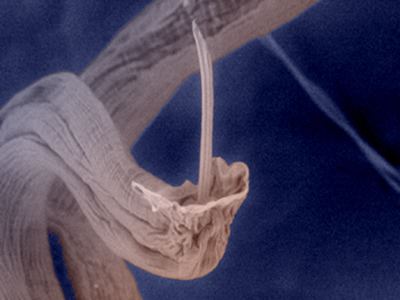Family Metastrongylidae Phylum Nematoda Order Strongylida | Rank Species | |
 | ||
Scientific name Angiostrongylus costaricensis Similar Angiostrongylus, Angiostrongylus cantonensis, Veronicellidae, Angiostrongylus vasorum, Sarasinula | ||
Angiostrongylus costaricensis
Angiostrongylus costaricensis is a species of parasitic nematodes.
Contents
Its distribution include Brazil.
Hosts
Humans and rodents are the definitive hosts. The main rodent host is the Cotton Rat.
Mollusc are the intermediate host and are infected through ingestion or penetration of the foot by L1 infective larvae from infected feces.
Pathology
Pathology is due to both the adults and the eggs. Adults in the ileo-caecal arterioles cause an inflammatory (eosinophilic) response in humans. In the Cotton rat the adult worms cause local haemorrhages.
The intestinal wall is also affected. In humans there is a thickening of the intestinal wall (ileum, appendix and caecum). In rats with heavy infestations there is a yellow discolouring of the serial surface of the intestinal walls.
Clinical signs and diagnosis
Abdominal pain which presents as a palpable mass on clinical examination. Anorexia Diarrhoea Vommiting
In the blood and tissue biopsy there is eosinophillia. Other ways for diagnosis from a biopsy are eggs and larvae in the blood vessels. Imaging go the liver and intestine can also be helpful. Serology is sometimes used to diagnose from a blood sample and there are specific ELISA.
